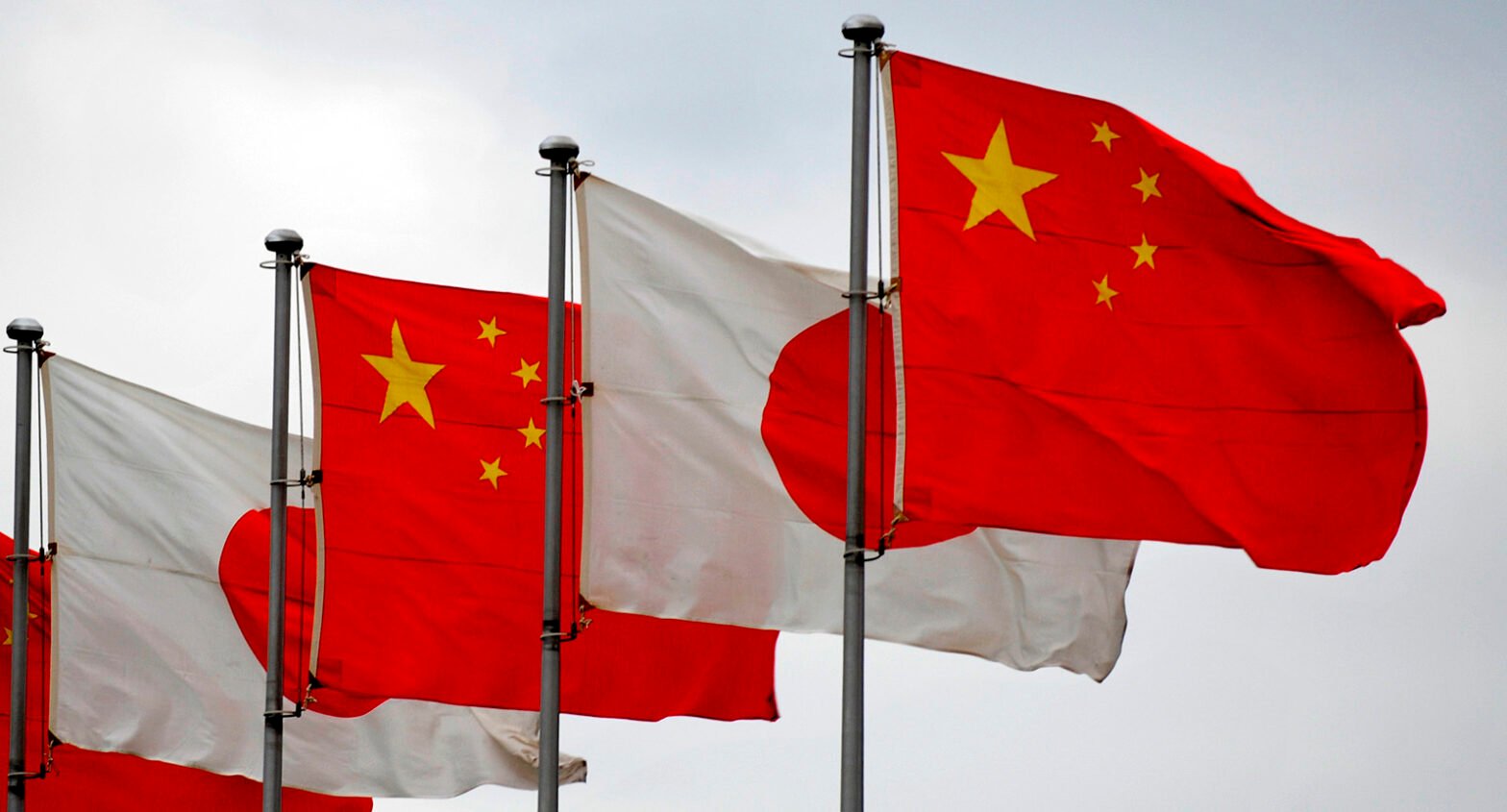At the southernmost corner of the Japanese archipelago in the East China Sea, a cluster of uninhabited small islands is currently a frontline of what might turn into a new hotbed of potential conflict. This group of islands, named “Senkaku” in Japanese and called “Diaoyu” by China consists of five islets and three rock formations with a total cover area of 7 square kilometres located at about equal distance of 170 km from Taiwan and the closest Japanese island in Okinawa Prefecture, and 330 km. from the mainland China. The Islands are currently under Japanese administration, though their sovereignty is contested by both China and Taiwan. This tiny string of islands lies close to significant oil and gas deposits, strategic shipping lanes and rich fishing grounds.
On the issue of sovereignty, Japan holds that the Senkaku Islands are under its valid control and in light of historical facts and based on international law are clearly an integral part of its territory. From 1885, the Government of Japan initiated the surveys of the Senkaku Islands and on 14 January 1895 installed a sovereignty marker and formally incorporated the islands into Japanese territory. In 1932, the Japanese Government revised the status of four islands from state-owned to privately-owned land and sold them to a Japanese family. After World War II and under the 1951 San Francisco Treaty, Japan renounced all its claims to Korea, Formosa (Taiwan), the Pescadores, and the Spratly Islands in the South China Sea. In 1953 the United States was granted formal administrative rights on Okinawa in accordance with Article 3 of the San Francisco Treaty. An important feature of that arrangement was that the United States recognised Japanese “residual sovereignty” over the islands, meaning that at a future date all sovereign powers obtained by the United States were to be returned to Japan. The Senkaku Islands are not explicitly mentioned in the treaty, though there was a tacit understanding that Japan will administer them as a part of Okinawa Prefecture. The Senkaku islands under U.S. trusteeship were returned to Japan in 1971 in compliance with the Okinawa reversion deal. In 1968 Japan began enforcing its Air Defense Identification Zone (ADIZ) on the area covering the Senkuku islands. An ADIZ is a defined area extending beyond national territory in which unidentified aircrafts are liable to be interrogated and, if necessary, intercepted for identification before they cross into sovereign airspace.
In contrast to China’s claims to the South China Sea (the so called ‘nine-dash line’) that was formalised back in 1947, the first official statement of the Chinese Ministry of Foreign Affairs disputing the title over the Senkuku/Diaoyu islands in the East China Sea was issued on 30 December 1971. China claims that the islands have been part of its territory since ancient times, serving as important fishing grounds administered by the province of Taiwan. According to Beijing, ancient Chinese records dating back to the Ming Dynasty era (1368-1644) mention the islands, while more recent documentation indicates that the islands were incorporated into the Ming and Qing dynasties (1644-1911) maritime defence. Beijing further argues that Taiwan was ceded to Japan vide the Treaty of Shimonoseki in 1895 after the Sino-Japanese war and with Taiwan’s return as of implementation of the Treaty of San Francisco, all islands associated with it should have been returned too.
The other claimant, Taiwan (officially Republic of China or R.O.C.) maintains that the islands it refers to as “Diaoyutai” form an inherent territory of Taiwan based on the islands’ geographical location, geological structure, historical evidence, usage, and international law. However, Taiwan’s position is complicated by the fact that the R.O.C. retreated to Taiwan in 1949 and the People’s Republic of China (P.R.C.) was established in the mainland in the same year and has maintained a strict “one China” policy asserting that Taiwan is a part of China, and by the fact that neither the R.O.C. nor the P.R.C. were parties to the 1951 San Francisco Peace Treaty. Although Taiwan and China have made similar claims owing to their shared history, Taiwan has chosen to make its own claims and to pursue a different diplomatic initiative in the face of geopolitical realities as well as the overall interactions with Japan in view of the fact that Tokyo does not officially recognise Taiwan as a sovereign state.
Japan and China normalised their relations in 1972 and concluded their “Peace and Friendship Treaty” in 1978. In the course of the related negotiations, Japan raised the issue of the Senkaku Islands but in the end both parties decided to unofficially shelve the issue so as to avoid negative effect on the otherwise successful outcome of their talks. The Chinese side apparently was keen to avoid raising issues that might have hindered or otherwise put at risk the outcome of bilateral negotiations. China’s policy under Deng Xiaoping (1978-1992), was said to be aimed at deferring the dispute and to seek joint exploitation of the area’s natural resources with Japan.
China and Japan also disagree on application of the 1982 United Nations Convention on the Law of the Sea (UNCLOS), which both nations have ratified. Article 57 of the convention defines the limitation of exclusive economic zones (EEZs), which are permissible up to 200 nautical miles from the baseline, or to the median line if claims from opposing coasts overlap. Meanwhile, UNCLOS’s Article 76 defines the extended continental shelf, permissible to the shorter of the end of the continental shelf or 350 nautical miles from the baseline. Japan, based on UNCLOS proposes the Median line division of the EEZ. China instead insists on the application of UNCLOS, considering the natural prolongation of its continental shelf and its extension as far as the “Okinawa Trough” and beyond 200 nautical miles from the baselines from which the breadth of the territorial sea of China is measured. Thus, the conflicting claims overlap in approximately 81,000 square miles of water.
The dispute between China and Japan reignited into open in September 2012 when the Japanese government announced it was finalising the purchase of three of the contested islands from the private Japanese owner. The move sparked widespread protests in China and counter protests in Japan. The Chinese foreign ministry issued a statement criticising the Japanese Government’s decision to nationalise the islands, on the grounds that this has “altered the status quo” and affected China’s “inalienable rights” over the islands. Since then, Beijing has taken legal and operational measures to strengthen its own hand, and Chinese maritime surveillance vessels, trawlers and investigation boats have regularly sailed in and out of what Japan considers to be its territorial waters around the islands while the Japanese coast guard is used to escorting Chinese ships inside the island’s territorial waters. China’s increased naval presence around the Senkaku Islands appears to be a further attempt to demonstrate that Beijing has a degree of ‘administrative control’ over the islets challenging Japan’s de facto administration. Beijing is taking similar steps to bolster additional sovereignty claims in the South China Sea, as it clearly desires to rise as a greater maritime power.
On 23 November 2013, China announced the creation of a new ADIZ in the East China Sea waters facing its coastline overlapping the already enforced Japanese ADIZ. Japan demanded the revocation of the Chinese ADIZ, while the United States declared that it would ignore the zone and refused to comply with any Chinese regulations involving it. Most third countries criticised the Chinese move and expressed their concern about any potential restrictive reading of customary international laws. Noteworthy was that Washington has also refrained from taking a clear position on Chinese legal claims to the Islands, but has stressed on a number of occasions over the years that since the Senkaku Islands are under the administration of Japan, they are ipso facto covered by the 1960 US-Japan Treaty of Mutual Cooperation and Security. The European Union has so far preferred to take a cautious approach and has not expressed its explicit views on the sovereignty of the contested islands. On 25 September 2012 the then E.U. High Representative Catherine Ashton called on all parties to calm the situation in East Asia’s maritime areas, using the UN Convention on the Law of the Sea (UNCLOS) and other international rules to resolve disputes.
The island issue highlights the more assertive conduct China has undertaken to eventuate its territorial claims in both the East China Sea and the South China Sea. The issue raises serious questions about sustainable regional security as the Chinese military is fast modernising amid the Obama administration’s 2012 “Pivot to East Asia” regional strategy and the increasingly unresilient American posture vis-à-vis Beijing further cemented by President Joe Biden’s first phone call to Prime Minister Suga of Japan reiterating Washington’s stance of “unwavering commitment to the defence of Japan” that covers the Senkaku islands too.
While the dispute has turned into the most significant geopolitical boiling point and locus of security competition between China and Japan, forcing both sides to lodge regular diplomatic protests, the two countries have so far preferred to handle the situation with utmost care and to avoid measures that could turn the dispute into a hot conflict. Tokyo, with better standing in legal and logical arguments, does not seem to be eager to stir up differences with its biggest trading partner while China, in the face of the many other territorial disputes at its immediate and extended neighbourhood, and also the current tough diplomatic and trade battle with the U.S., does not wish to pick an extra challenge with another power, at least, for the time being. The stalled Ukraine war and Russia’s unexpected poor performance in military, diplomatic, economic and public opinion fronts that has compromised Moscow’s superpower status, alongside the evident unified resolve of the west to counter major adversaries might have left their impact on the mindset of Chinese leaders with the result of a more cautious Chinese pursuit of risky territorial claims in a transforming global environment.
Author Brief Bio: Hossein Ebrahim Khani is Senior Fellow at the Institute of Political and International Studies (IPIS), Tehran, Iran.




